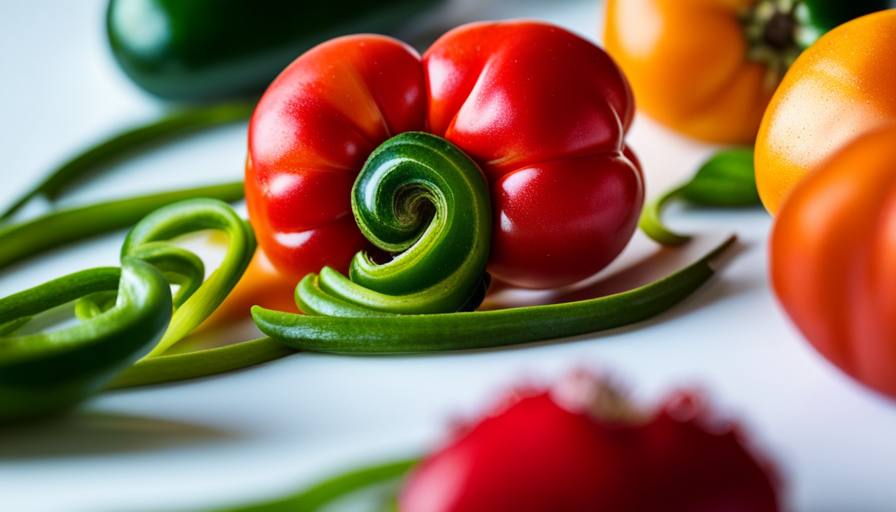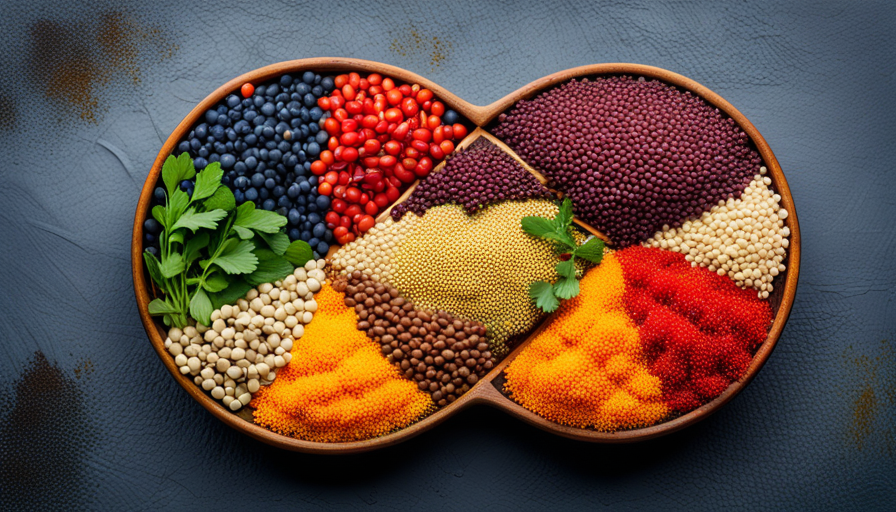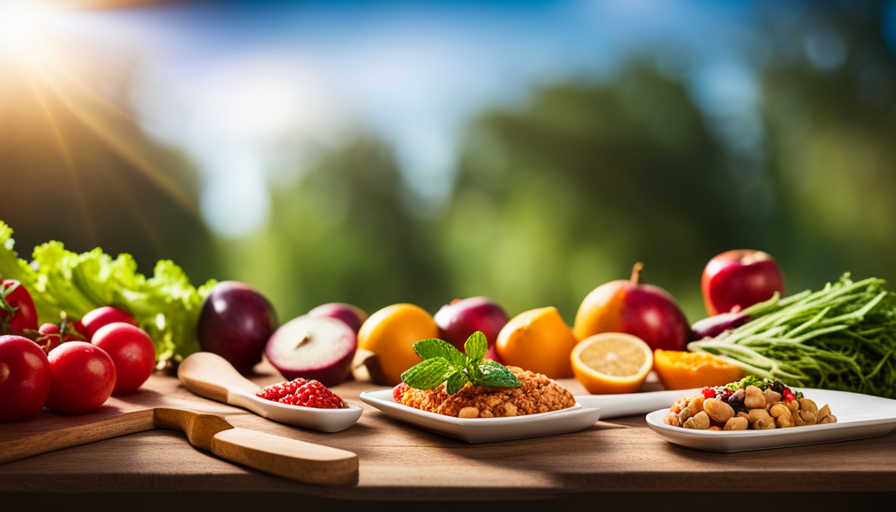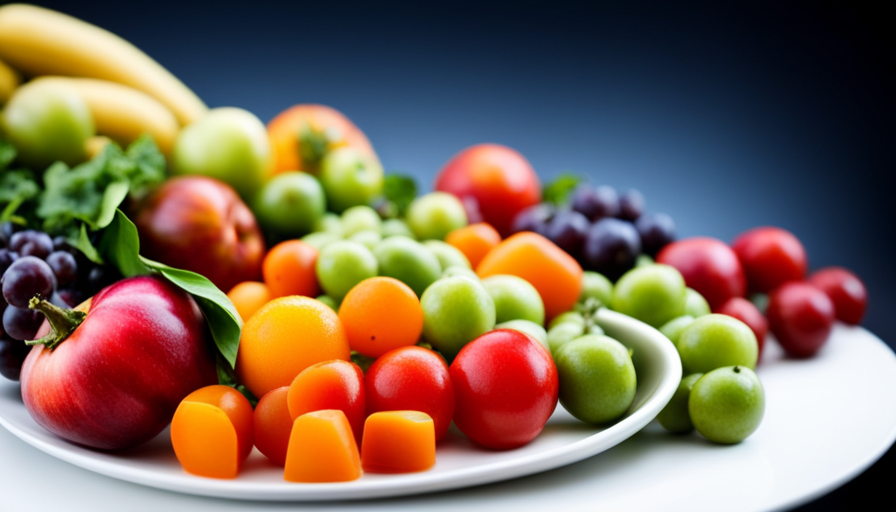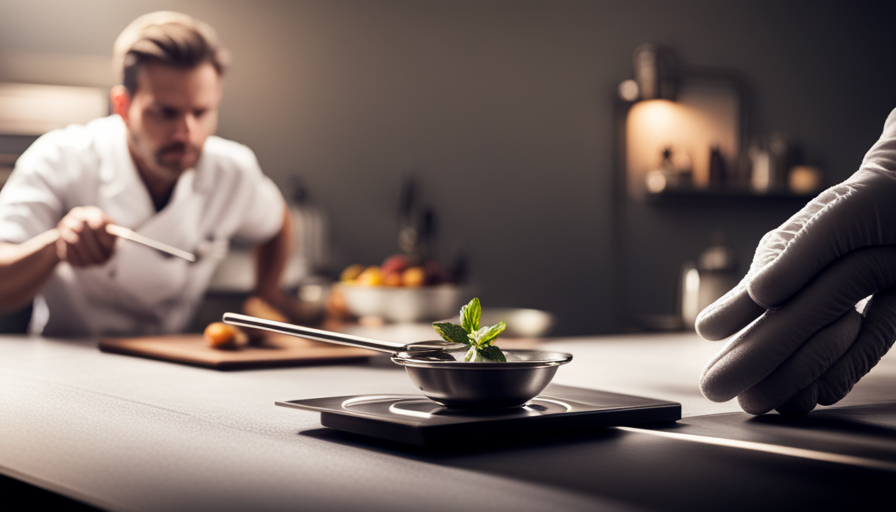Are you tired of the same old pasta dishes? Looking for a healthy and delicious alternative? Get ready to discover a world of flavor with zoodles, the latest trend in raw food!
Zoodles, or zucchini noodles, are a fantastic substitute for traditional pasta, offering a lighter and more nutrient-packed option. In this article, we will guide you through the process of making zoodles from scratch, from choosing the perfect zucchini to storing and freezing your creations. We’ll also provide you with a range of seasoning and flavoring options, as well as cooking methods to achieve that perfect texture.
Whether you’re a seasoned raw food enthusiast or just looking to incorporate more veggies into your diet, zoodles are a versatile and tasty addition to any meal. So grab your spiralizer and let’s get noodling!
Key Takeaways
- Choosing smaller zucchinis with vibrant green color and firm skin is important for making delicious raw zoodles.
- Spiralizers are available in different types and techniques, such as handheld, countertop, and electric options.
- Seasoning options for zoodles include simple dressings with olive oil, lemon juice, salt, as well as herbs and spices like basil, cilantro, garlic powder, paprika, and cumin.
- Cooking methods for zoodles include sautéing, steaming, boiling, and enjoying them raw, each method offering different texture and taste profiles.
Choosing the Right Zucchini
When it comes to making delicious raw zoodles, choosing the right zucchini is absolutely essential! Not all zucchinis are created equal, and selecting the right one can make a significant difference in the taste and texture of your zoodles.
When selecting zucchinis, opt for ones that are smaller in size. These tend to have a more delicate flavor and a crisper texture, which is ideal for raw zoodles. Additionally, look for zucchinis that have a vibrant green color and firm skin. This indicates that they’re fresh and packed with nutrients.
If you have the opportunity, consider growing your own zucchini. This way, you have complete control over the growing process and can ensure that no pesticides or chemicals were used. Freshly picked zucchinis have the best flavor and nutritional value.
Speaking of nutritional value, zucchinis are a fantastic addition to any raw food diet. They’re low in calories and high in fiber, making them a great substitute for pasta. Zucchinis are also packed with vitamins and minerals, including vitamin C, vitamin A, and potassium.
By choosing the right zucchini, you’re setting the foundation for a delicious and nutritious raw zoodle dish. So, next time you’re at the grocery store or planning your garden, be sure to select the best zucchinis for your raw food creations.
Preparing Your Spiralizer
First, gather all the fresh vegetables you’ll need to transform into delicate, curly strands using your trusty spiralizer.
The first step in preparing your spiralizer is to choose the best one for your needs. There are several types of spiralizers available on the market, including handheld spiralizers, countertop spiralizers, and electric spiralizers. Consider your budget, kitchen space, and personal preferences when making your selection.
Once you have your spiralizer, it’s time to familiarize yourself with the different types of spiralizing techniques. The most common technique is the handheld method, where you simply twist the vegetable against the blades to create the desired spirals. Another technique is the countertop method, which involves securing the vegetable onto a holder and turning a handle to spiralize it. Lastly, electric spiralizers are a convenient option that automates the spiralizing process. Experiment with different techniques to find the one that works best for you.
Remember to follow the manufacturer’s instructions for setting up and using your spiralizer. With your spiralizer ready to go, you’re now one step closer to enjoying delicious zoodles made from fresh, raw vegetables.
Spiralizing the Zucchini
Once you have your spiralizer ready, it’s time to transform the zucchini into delicate, curly strands, like a painter creating brushstrokes on a canvas. Before you begin spiralizing, it’s important to choose the right type of zucchini. Opt for medium-sized zucchinis that are firm and free from blemishes. These will yield the best results and ensure that your zoodles have the perfect texture.
When it comes to spiralizing, there are a few techniques to keep in mind. Start by trimming the ends of the zucchini and cutting it into a manageable size that fits into your spiralizer. If your spiralizer has different blade options, choose the one that suits your desired thickness for the zoodles. Firmly grip the zucchini and place it into the spiralizer, making sure it is centered. Apply gentle pressure as you turn the handle, allowing the spiralizer to do its magic and create those beautiful zucchini noodles.
To give you a better idea of the spiralizing process, here’s a handy table:
| Zucchini Type | Spiralizer Technique |
|---|---|
| Green Zucchini | Blade C |
| Yellow Zucchini | Blade B |
| Round Zucchini | Blade A |
Remember, practice makes perfect, so don’t be discouraged if your first attempts don’t turn out exactly as expected. With a little patience and some experimentation, you’ll soon become a pro at spiralizing zucchinis for your raw food dishes.
Seasoning and Flavoring Options
To add a burst of flavor to your spiralized zucchini, explore a variety of seasoning and flavoring options. There are numerous flavoring techniques that can enhance the taste of your zoodles while still keeping them raw and nutritious.
One popular option is to use a simple dressing made with olive oil, lemon juice, and a pinch of salt. This combination adds a tangy and refreshing taste to your zucchini noodles.
Another way to amp up the flavor is by using herbs and spices. Basil, cilantro, and parsley can be chopped and sprinkled over your zoodles, giving them a fresh and aromatic twist. Additionally, spices like garlic powder, paprika, and cumin can be mixed with a little olive oil and drizzled over the zoodles for a more savory flavor.
When experimenting with seasoning, it’s important to keep in mind the nutritional benefits. Herbs and spices are not only low in calories but also packed with antioxidants, vitamins, and minerals. So, by incorporating different flavorings, you not only enhance the taste but also boost the nutritional profile of your zucchini noodles.
So go ahead and get creative with your seasoning choices to make your raw zoodles even more delicious and nutritious.
Cooking Methods for Zoodles
Spice up your spiralized zucchini by exploring different cooking methods that’ll take your zoodles to the next level of deliciousness. Cooking zoodles not only enhances their flavor, but it also changes their texture, making them more enjoyable to eat. Here are four cooking techniques you can try to elevate your zoodle game:
-
Sautéing: Heat a little olive oil in a pan and add your zoodles. Sauté them for about 3-4 minutes until they’re tender but still retain some crunch. This method helps to soften the zoodles slightly while maintaining their nutritional value.
-
Steaming: Place your zoodles in a steamer basket over boiling water. Cover and steam for about 2-3 minutes until they’re just tender. Steaming preserves the zoodles’ natural moisture and nutrients, making it a healthy cooking option.
-
Boiling: Bring a pot of water to a boil and add your zoodles. Cook for 1-2 minutes until they’re al dente. Be careful not to overcook them, as they can become mushy. Boiling zoodles is a quick and easy method that retains most of their nutritional value.
-
Raw: If you prefer a more crunchy texture, you can enjoy zoodles raw. Simply toss them with your favorite dressing or sauce and let them marinate for a few minutes to soften slightly. This method preserves the zoodles’ maximum nutritional value.
Experimenting with these cooking techniques will add variety to your zoodle dishes while maintaining their nutritional benefits. So go ahead and get creative in the kitchen – your taste buds’ll thank you!
Serving Suggestions and Pairings
Enhance your zoodle experience by exploring a variety of serving suggestions and pairings that’ll tantalize your taste buds and create a visually stunning dish.
When it comes to serving ideas for zoodles, the options are endless. One popular choice is to toss them with a fresh and vibrant salad dressing. The zoodles add a light and refreshing element to the salad, making it a perfect summer dish.
Another great serving idea is to sauté the zoodles with garlic, olive oil, and cherry tomatoes for a quick and flavorful side dish. The sweetness of the tomatoes complements the zoodles perfectly.
If you’re looking for a heartier meal, try pairing zoodles with your favorite protein. Whether it’s grilled chicken, shrimp, or tofu, the zoodles serve as a delicious and nutritious base for your meal.
Finally, don’t forget about the sauce! Zoodles can be topped with marinara sauce, pesto, or even a creamy Alfredo sauce for a more indulgent option.
Experiment with different serving ideas and zoodle pairings to find your favorite combination. The versatility of zoodles allows you to create a dish that suits your taste preferences and dietary needs. So go ahead, get creative, and enjoy the endless possibilities of zoodle dishes!
Storing and Freezing Zoodles
When you’re done enjoying your zoodle creation, have you ever wondered how to properly store and freeze them for later use? Freezing zoodles is a great way to preserve zucchini and ensure you always have a nutritious and convenient meal option on hand.
Here are three simple steps to help you store and freeze your zoodles:
-
Prepare the zoodles: After spiralizing the zucchini into noodles, pat them dry with a paper towel to remove any excess moisture. This will prevent them from becoming mushy when frozen.
-
Flash freeze: Lay the zoodles in a single layer on a baking sheet lined with parchment paper. Place the baking sheet in the freezer for about 30 minutes, or until the zoodles are firm. Flash freezing them individually will prevent them from clumping together and make it easier to portion them later.
-
Store in airtight containers: Once the zoodles are firm, transfer them into airtight containers or freezer bags. Make sure to squeeze out any excess air before sealing to prevent freezer burn. Label the containers with the date and store them in the freezer for up to three months.
By following these steps, you can easily store and freeze your zoodles, allowing you to enjoy the freshness and nutritional benefits of zucchini all year round.
Tips for Achieving the Perfect Texture
Now that you know how to store and freeze zoodles, let’s dive into the next step: achieving the perfect texture. When it comes to zoodles, achieving tenderness while avoiding mushiness is the key to a satisfying raw food experience.
To achieve the perfect texture, start by choosing the right zucchini. Look for firm and fresh zucchinis with a vibrant green color. Avoid any that feel soft or have blemishes, as they may result in mushy zoodles.
When spiralizing your zucchini, make sure to use a spiralizer with sharp blades. This’ll help create thin and uniform noodles, which cook more evenly. Remember to remove the ends of the zucchini before spiralizing to prevent any bitterness.
Once you have your zoodles ready, it’s time to cook them. Heat a small amount of olive oil in a skillet over medium heat. Add the zoodles and sauté them for just a few minutes until they’re tender but still have a slight crunch. Overcooking will lead to mushy zoodles, so keep a close eye on them.
By following these tips, you’ll be able to achieve zoodles with the perfect texture – tender, yet not mushy. Now you’re ready to enjoy your delicious and nutritious raw food creation!
Variations and Creative Recipes
Get ready to explore the exciting world of zoodle variations and creative recipes that’ll take your culinary experience to the next level!
When it comes to zoodles, the possibilities are endless. They’re not only a healthy alternative to traditional pasta, but they also add a vibrant and fresh twist to any dish.
One way to unleash your creativity in presentation is by mixing different types of vegetables to create colorful zoodles. For example, combining zucchini with carrots or beets can create a visually stunning dish that’s as delicious as it’s beautiful.
Zoodles can also be used as a base for a variety of zoodle-inspired dishes. From zoodle salads to zoodle stir-fries, the options are limitless.
For a light and refreshing meal, try tossing zoodles with a citrus dressing, cherry tomatoes, and fresh herbs. Or, for a heartier option, sauté zoodles with garlic and olive oil, then top with grilled chicken or shrimp.
Incorporating zoodles into your meals not only adds a burst of flavor and texture, but it also provides a healthy and nutritious alternative to traditional pasta.
So go ahead, let your creativity flow and experiment with different zoodle variations and recipes. Your taste buds’ll thank you!
Benefits of Incorporating Zoodles into Your Diet
Experience the incredible benefits of adding zoodles to your diet and elevate your culinary journey to new heights! Zoodles, or zucchini noodles, aren’t just a delicious alternative to traditional pasta, but they’re also a powerhouse of nutrition. Here are three reasons why incorporating zoodles into your diet can have a positive impact on your health and weight loss goals:
-
Nutritional value: Zoodles are low in calories and carbohydrates, making them an excellent choice for those looking to reduce their calorie intake or follow a low-carb diet. They’re also rich in vitamins A, C, and K, as well as minerals like potassium and magnesium. These nutrients support overall health and contribute to a strong immune system.
-
Weight loss benefits: Zoodles are a great option for weight loss due to their low calorie and high fiber content. The fiber in zoodles helps you feel fuller for longer, reducing the chances of overeating. Additionally, the high water content in zucchini aids in hydration, which is essential for maintaining a healthy weight.
-
Versatility in recipes: Zoodles can be used in a variety of recipes, from salads to stir-fries and even as a replacement for traditional pasta dishes. Their mild flavor and noodle-like texture make them a versatile ingredient that can be enjoyed in many ways.
Incorporating zoodles into your diet can not only add variety and excitement to your meals, but it can also provide numerous health benefits, including weight loss support. So, why not give zoodles a try and discover a whole new world of delicious and nutritious possibilities?
Frequently Asked Questions
Can I use any type of zucchini to make zoodles?
Any type of zucchini can be used to make zoodles. You have the freedom to choose from a variety of zucchini options.
Once you have your zoodles, get creative with seasoning! There are different ways to season zoodles, such as using garlic, lemon, or herbs like basil and thyme.
You can also explore creative recipes using zoodles, like zoodles with pesto or zoodles in a stir-fry. Let your imagination run wild with these healthy and delicious options!
How do I clean and maintain my spiralizer?
To clean and maintain your spiralizer, follow these cleaning tips and best maintenance practices.
After each use, disassemble the spiralizer and rinse the parts with warm soapy water. Use a brush or sponge to remove any leftover food particles.
Dry the parts thoroughly before storing them.
Regularly check for any signs of wear or damage, and replace any worn or broken parts.
By following these steps, you can ensure your spiralizer stays in good condition for long-lasting use.
Should I peel the zucchini before spiralizing?
Peeling zucchini before spiralizing isn’t necessary, but it ultimately depends on your personal preference. The skin of zucchini is edible and adds a nice texture to zoodles. However, if you prefer a smoother texture or want to remove any potential bitterness, you can peel the zucchini.
Keep in mind that peeling may slightly affect the taste and texture, but it shouldn’t drastically alter the overall experience of enjoying zoodles.
Can I use a vegetable peeler instead of a spiralizer?
Yes, you can use a vegetable peeler as an alternative to a spiralizer. However, a spiralizer has several benefits that make it a better choice. A spiralizer creates long, thin noodles that closely resemble traditional pasta, while a vegetable peeler will produce wider, flatter ribbons.
Additionally, a spiralizer is typically faster and more efficient at creating zoodles. So while a vegetable peeler can work in a pinch, investing in a spiralizer is recommended for the best results.
Can I use frozen zucchini to make zoodles?
Sure, you can totally use frozen zucchini to make zoodles! It’s a great way to save time and have zoodles ready to go whenever you want them.
To properly defrost frozen zucchini for zoodles, simply place the frozen zucchini in a colander and let it sit at room temperature for about 30 minutes. Once it’s thawed, use a spiralizer or vegetable peeler to make your zoodles.
Enjoy your quick and convenient zucchini noodles!
Can I Use Raw Sugar to Make Zoodles as a Hummingbird Food Substitute?
Yes, you can consider making hummingbird food raw sugar. However, using raw sugar to make zoodles as a hummingbird food substitute is not recommended. Raw sugar lacks the necessary nutrients and vitamins that hummingbirds need for their diet. It’s best to stick to traditional hummingbird food solutions.
Conclusion
In conclusion, incorporating zoodles into your diet is a delicious and nutritious way to enjoy raw food. By following the steps outlined in this article, you can easily make zoodles at home using a spiralizer.
With the right seasoning and cooking methods, you can achieve the perfect texture and flavor. Whether you’re looking to add more vegetables to your meals or trying to eat healthier, zoodles are a great option.
So why not give them a try and enjoy the numerous benefits they offer? Your taste buds and your body will thank you.

